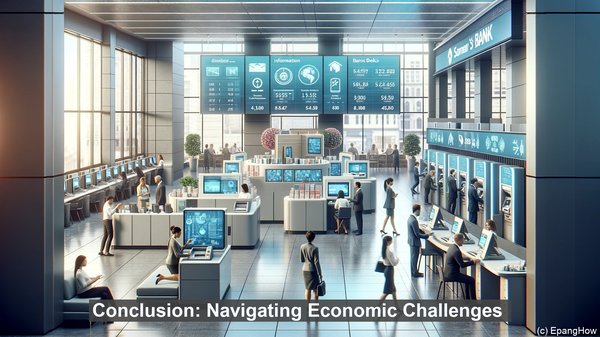Introduction: The Economic Landscape
Hello everyone! Welcome to our channel, where we unravel the intricacies of the world of economics. Today, we’ll be exploring the contrasting concepts of stagflation and galloping inflation. While both involve rising prices, they have different underlying dynamics. So, let’s dive in!

Defining Stagflation: A Unique Conundrum
Stagflation is a rare economic situation characterized by a combination of stagnant economic growth, high unemployment rates, and soaring prices. It’s a perplexing scenario because, traditionally, inflation and unemployment have an inverse relationship. However, in stagflation, they both surge simultaneously, leading to a complex set of challenges.
Causes of Stagflation: Unraveling the Factors
Stagflation can be triggered by various factors. One common cause is a supply shock, such as a sudden increase in oil prices. This leads to higher production costs, which, in turn, are passed on to consumers. Additionally, a decline in productivity or a mismatch between labor skills and market demands can contribute to the stagnation and inflationary pressures.
Galloping Inflation: A Rapid Price Spiral
In contrast to stagflation, galloping inflation is characterized by a rapid and accelerating increase in prices. While inflation is a normal part of any economy, galloping inflation is marked by an excessive and unsustainable rise in prices. This can erode the purchasing power of individuals and create economic instability.
Causes of Galloping Inflation: The Role of Demand
Galloping inflation is often demand-driven. When there’s excessive money supply in the economy, coupled with increased consumer spending, it can create a situation where the demand for goods and services outpaces their supply. This, in turn, leads to price hikes as businesses try to balance the demand-supply dynamics.
Implications of Stagflation: A Challenging Scenario
Stagflation poses several challenges for policymakers. The dual problem of high inflation and unemployment requires a delicate balancing act. Traditional tools, such as interest rate adjustments, may not be as effective in this scenario. Moreover, the social implications of stagflation, such as income inequality and reduced purchasing power, can have long-term consequences.
Addressing Galloping Inflation: Taming the Price Spiral
To curb galloping inflation, policymakers often resort to measures such as tightening monetary policy, which involves reducing money supply and increasing interest rates. Additionally, fiscal policies, such as reducing government spending, can also be employed. However, these measures need to be carefully implemented to avoid stifling economic growth.

